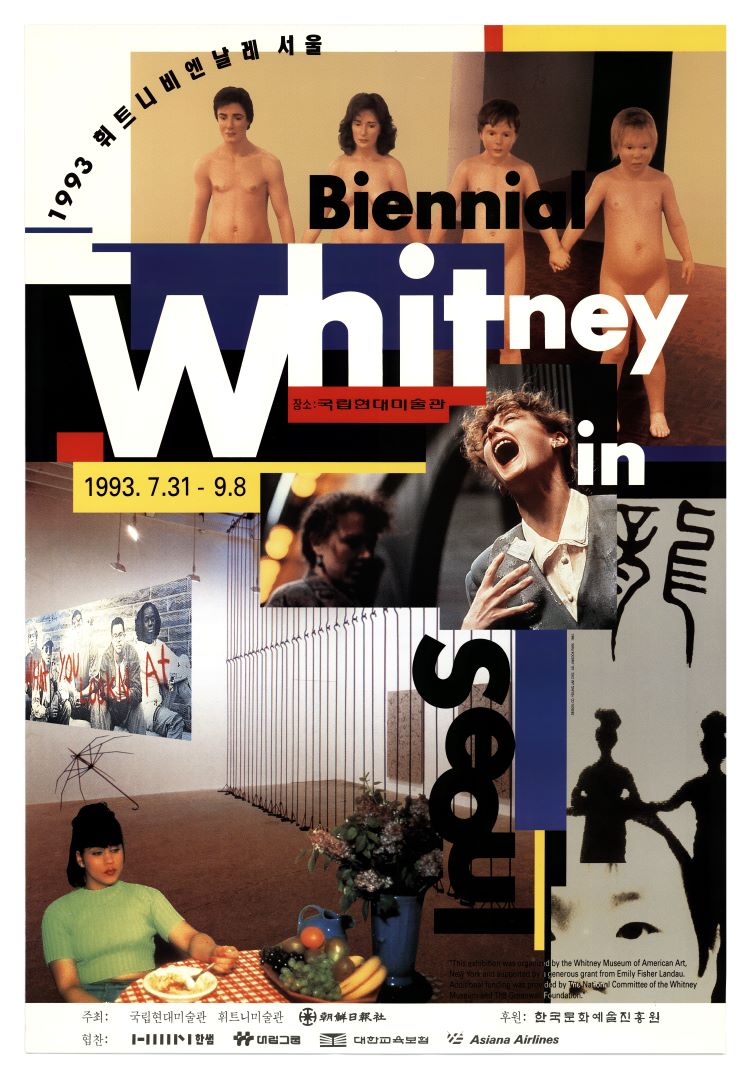
1993 Whitney Biennial in Seoul, Exhibition poster, MMCA Art Research Center Collection
1993 Whitney Biennial in Seoul
* Source: Multilingual Glossary of Korean Art. Korea Arts Management Service
Related
-
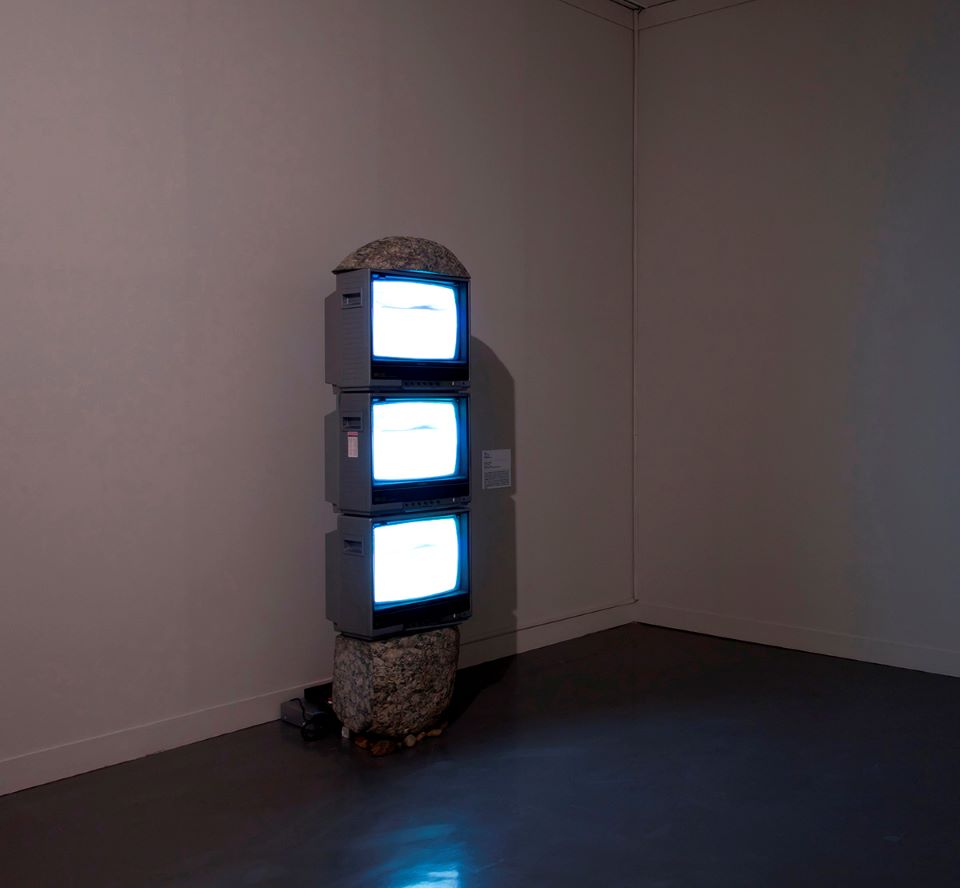
Media art
Media art refers to artworks produced using media scientific technology. It is also called new media art. The term became popularized as it was used by Les Levine in the Software exhibition held at the Jewish Museum in New York in 1970. Media art utilizes as its main media the primary means of communication in contemporary society, including books, magazines, newspapers, films, radio, televisions, videos, and computers. In and after the 1980s, a vast body of works that were based on computer technology and emphasized interaction between them and the audience were created, leading to the emergence of interactive art.
-
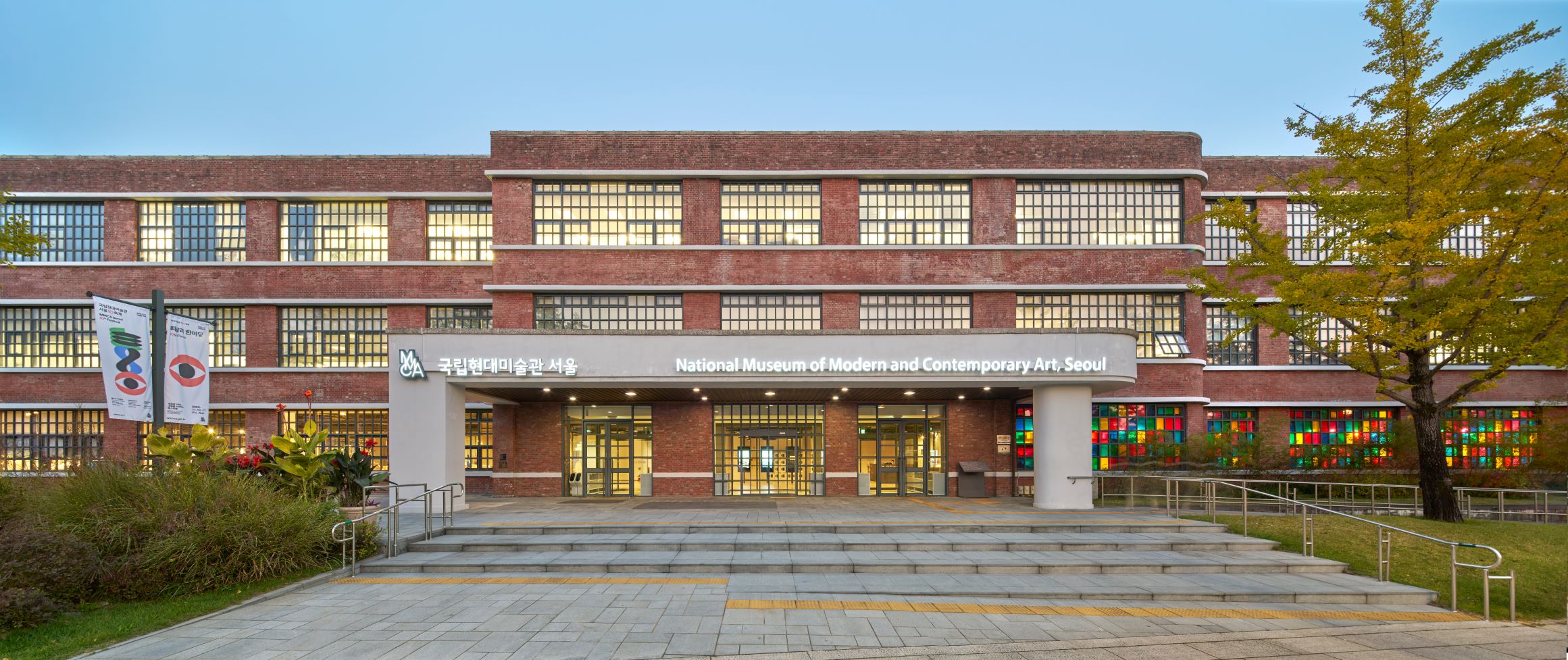
National Museum of Modern and Contemporary Art, Korea (MMCA)
A national museum established in 1969 that researches, collects, and exhibits modern and contemporary art. As of 2018, there are branches in Gwacheon, Deoksugung, Seoul, and Cheongju. When first established, the National Museum of Modern Art (now MMCA) was located within Gyeongbokgung palace. In 1973, the museum moved to the East Wing of the Deoksugung Seokjojeon building. Then, in 1986, the museum moved to its current location in Gwacheon, to occupy a new building equipped with an outdoor sculpture exhibition space, and has since opened a new chapter in Korean art. The perceived need for a space to focus specifically on Korean contemporary art led to the establishment of further site, the National Museum of Contemporary Art, Deoksugung in 1998. In November 2013, a further demand for contemporary art exhibitions led to the establishment of another Seoul branch being created in the Defense Security Command building in Sogyeok-dong, Jongno-gu, which has since its inception engaged in multifaceted exhibitions of both domestic and overseas contemporary art. Also, as a further component of the MMCA complex, a disused tobacco factory in Cheongju was remodeled to provide a home to the National Art Storage Center.
-
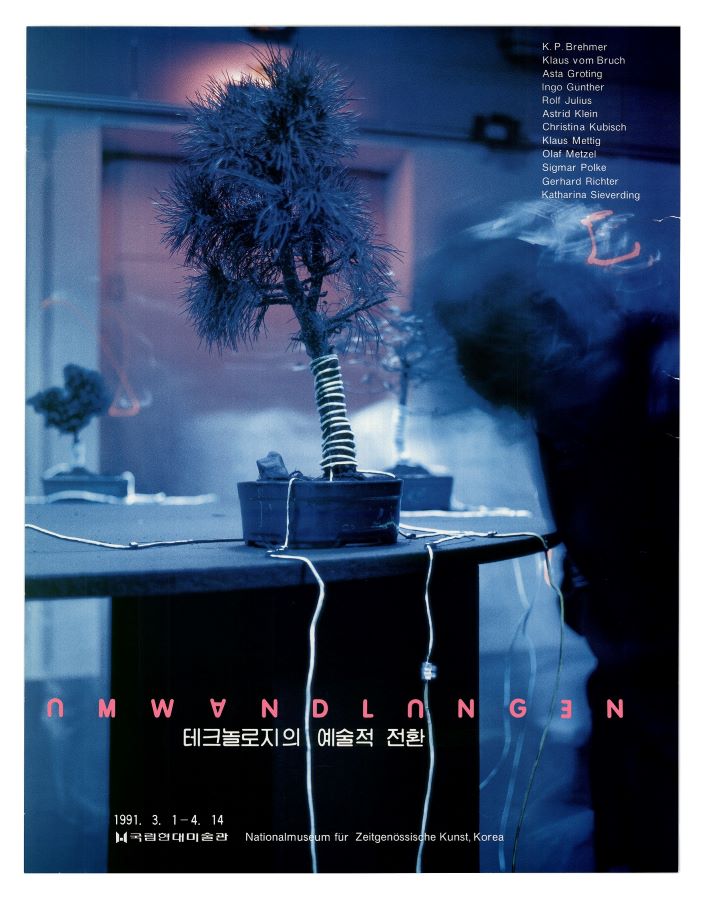
Technology art
The convergence of, or the attempts to fuse, art and science, which particularly arose as advances in scientific technology after World War II inspired artistic creation. Cybernetics and system theory, based on idealist thinking that emerged in the 1960s, and held that “scientific technology will accelerate human progress”, greatly influenced the creation of art based on modern technology. Later, this interest would expand into the realms of internet art, laser art, and holographic art. Toward the later 1970s, technological approaches to art merged with popular art, which led to the development of video games, cyberpunk novels, techno music, and deconstructionist graphic design. In Korea, Kang Kukjin’s 1967 work combining neon and stainless steel and AG group’s Kwak Hoon’s optical installation using electronics in his solo exhibition at Shinmoon Center in 1968 are representative works of early Korean digital art. In 1976, Kim Soungui videotaped his performance during his stay in Paris, and Park Hyunki and Lee Kangso submitted digital technology works to the Daegu Contemporary Art Festival in the mid-1970s.
Find More
-
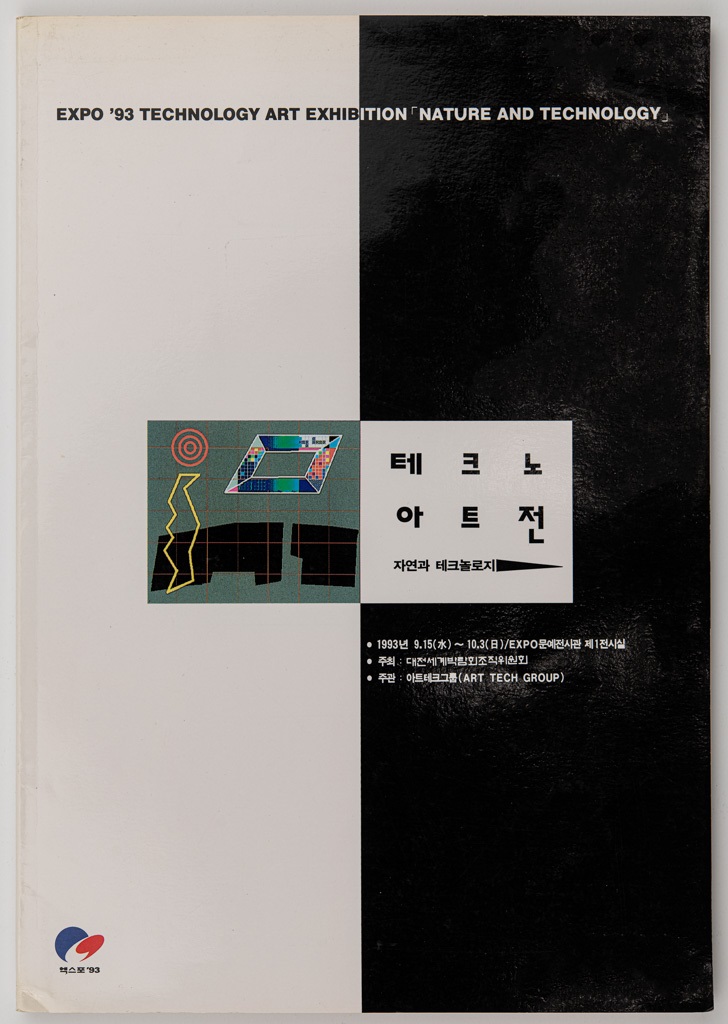
Daejeon Expo '93
Daejeon Expo ’93 was a world fair held for ninety-three days from August 7 through November 7 in 1993 at the Daedeok Science Town (now Daedeok Innopolis) in Daejeon Metropolitan City. The main theme of the expo was “Road to a New Leap Forward,” and its subthemes were “Harmony between Traditional Technology and Modern Science” and “Effective Utilization and Recycle of Resources.” Its official insignia consulted the taegeuk (supreme ultimate) symbol, and a baby space goblin named kkumdori based on designs of a goblin and an alien was chosen as the mascot. The Tower of Great Light (Hanbit Tower) symbolizing the science city Daejeon was erected in the Daejeon Expo Science Park. The exhibition halls were divided into a permanent exhibition zone and an international exhibition zone, and 105 exhibition halls were installed, including the Information and Communication Center, Space Exploration Center, Recycling Model Center, Resource Utilization Center, Technopia Center, and Kkumdori Garden. In particular, the Recycling Model Center presented a special art exhibition on recycling and a video art show under the theme of “Circulation and Creation.” According to official figures, 108 countries, thirty-three international organizations, and 200 domestic companies participated in the Daejeon Expo, and 14.5 million people visited it from home and abroad. The Daejeon Expo was significant in that it was the first edition held in a developing country in the history of expositions. It also received a review that with the participation of other developing countries in Latin America, the Middle East, and Africa, “it formed a new trend in expositions and brought these developing countries to the forefront of expositions as main agents.” Moreover, it was described as “the most remarkable information-oriented expo in the history of world fairs” and received positive reviews for “contributing significantly to the popularization of science technology.”
-
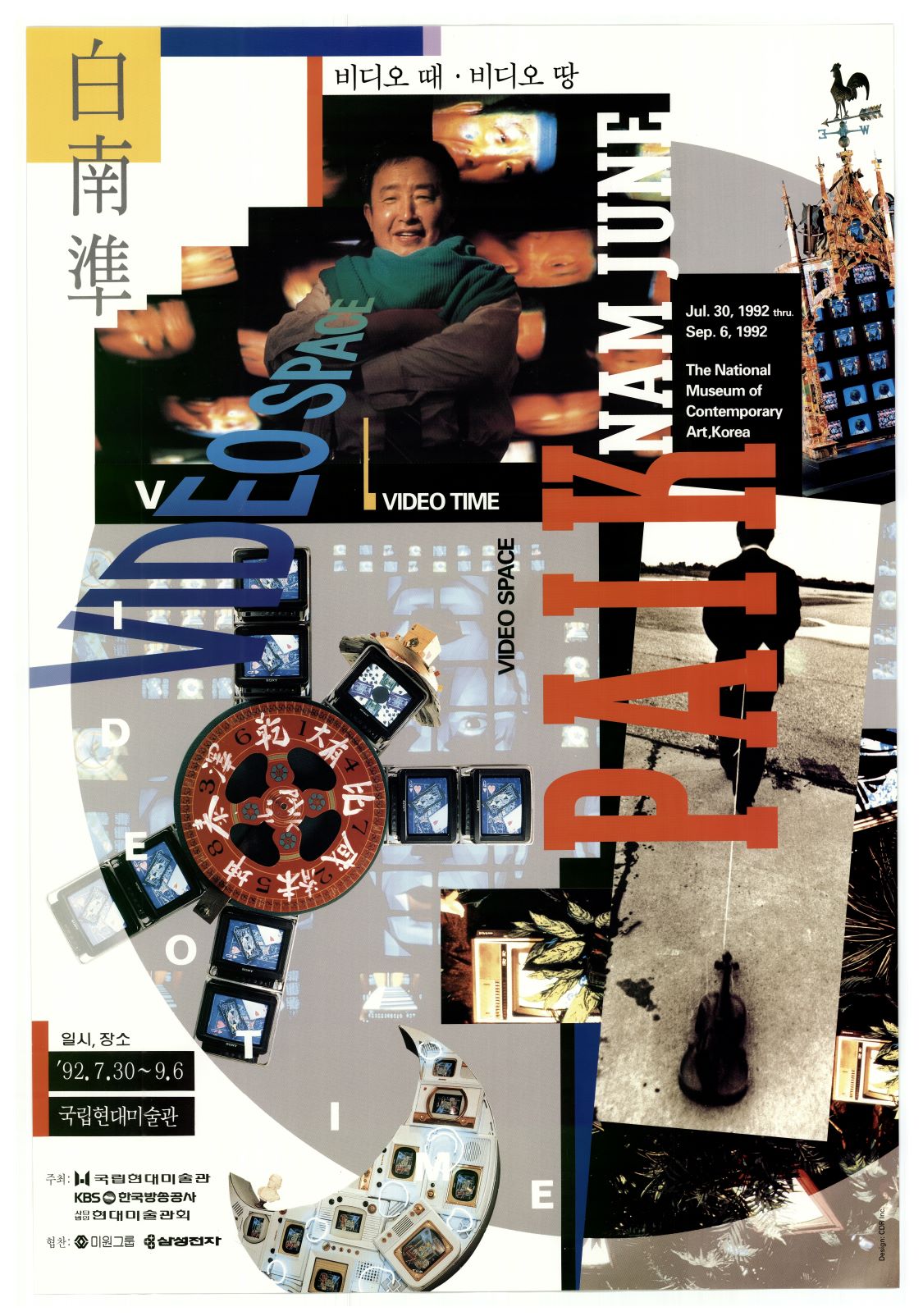
Paik Nam June· Video Time · Video Space
Paik Nam June · Video Time · Video Space was the first large-scale retrospective of Paik Nam June in South Korea held from July 30 through September 6, 1992 at the National Museum of Contemporary Art, Korea (now MMCA). Paik and MMCA organized the exhibition covering his entire oeuvre to celebrate thirty years of video art and his sixtieth birthday. At this exhibition, roughly 150 works, including videos, photographs, prints, and paintings, ranging from works from the early 1960s to new creations, were on display. Twenty new works using his trademark video art and satellite broadcast videos reflected Korean history and traditions. The exhibition featured his famed works including My Faust series (1989–1991), The More The Better (1988), and TV Garden (1974) as well as new ones such as Dongdaemun Gate, Ondal the Fool, Yangban in Seoul, and Jongno Neighborhood. Moreover, a space for tracing the artist’s biography was designed to showcase photographs, drawings, prints, printouts, and archival materials. The exhibition catalogue featured essays by art theorists from home and abroad, plates, chronologies, bibliography, and a list of institutions that house Paik’s works. Particularly, the essays offer a variety of perspectives on Paik’s oeuvre. They include “Paik Nam June’s Yellow Peril Theory” by Yu Jun-sang, “Paik Nam June and Korean Beauty” by Lee Yongu, “Paik Nam June’s Video: Video Ideals and Video Ideology” by Kim Hong-hee, “Global Communication Antenna” by Kang Taehi, “Nam June Paik: Post-Colonial Modernism” by David Ross, the director of the Whitney Museum of American Art, “Paik Nam June” by Wulf Herzogenrath, and “From 1984 to 1988” by Christine van Assche, a curator at the Centre Pompidou. Paik’s return to South Korea upon the holding of this exhibition and his activities there exerted a direct impact on the domestic art scene. His subsequent exchanges with international theorists and curators offered an opportunity to publicize Korean contemporary art to the world. The exhibition attracted an average of 4,000 visitors per day and nearly 10,000 on weekends, breaking the record for the largest number of visitors since the opening of the MMCA, contributing to the spread of museum-going culture.






